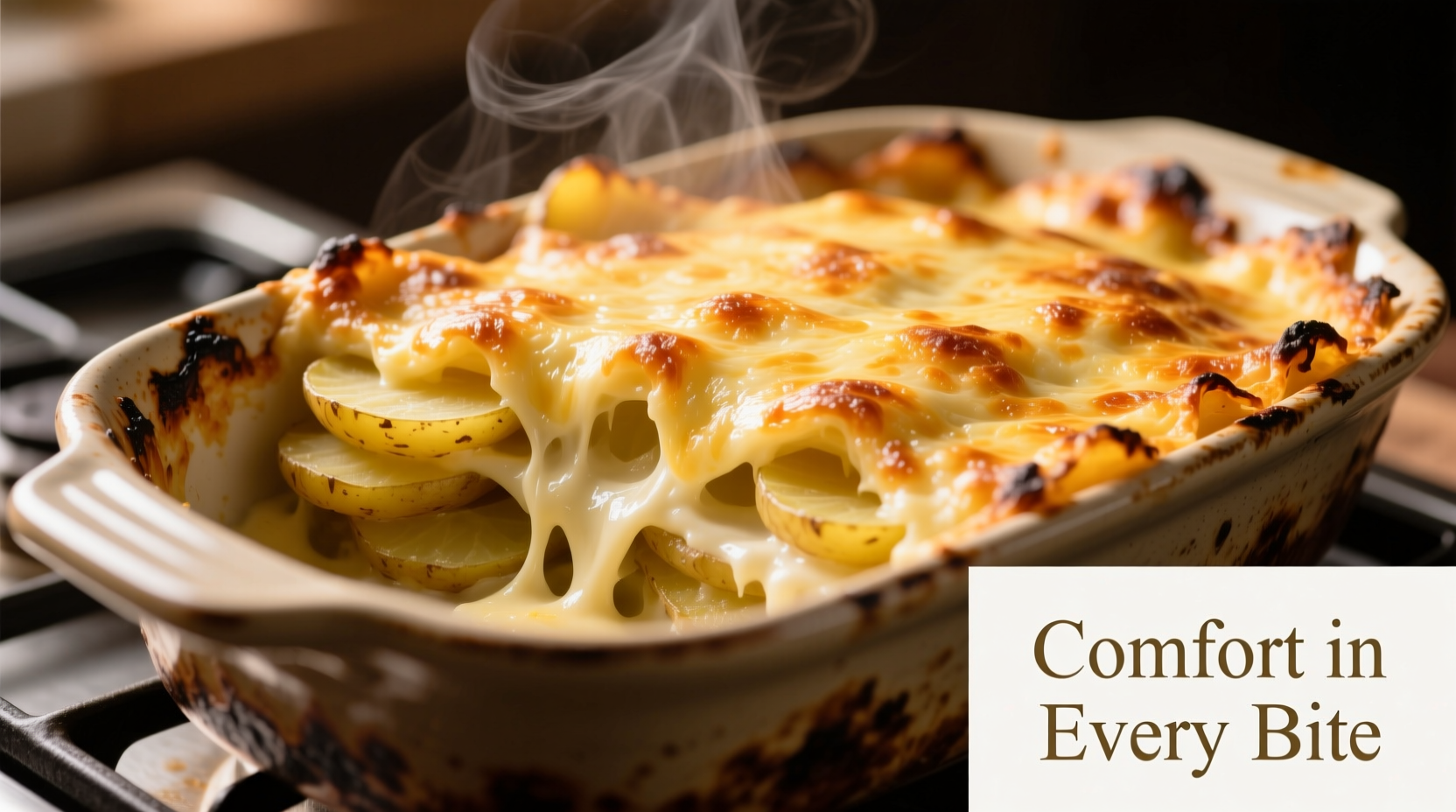When you combine potatoes and cheese, you're tapping into a culinary partnership perfected over generations. The magic happens through science: potatoes contain glutamic acid that enhances cheese's natural umami, while their starch content creates the ideal binding agent for melted dairy. This isn't just comfort food—it's food science at its most delicious.
The Science Behind the Perfect Pairing
Understanding why potatoes and cheese work so well together transforms your cooking from guesswork to precision. Potatoes contain significant amounts of glutamic acid—the same compound that makes Parmesan and tomatoes so flavorful. When combined with cheese's casein proteins and fat content, they create a synergistic flavor experience that's greater than the sum of its parts.
Food historians note that this pairing became widespread after potatoes were introduced to Europe in the 16th century. According to research from the International Potato Center, cheese production and potato cultivation naturally converged in Alpine regions where both could be stored through winter months. This practical necessity evolved into culinary tradition.
| Cheese Type | Best Potato Preparation | Melting Point | hFlavor Profile |
|---|---|---|---|
| Cheddar | Mashed or diced | 150°F (66°C) | Sharp, tangy, robust |
| Gruyère | Thinly sliced | 130°F (54°C) | Nutty, sweet, complex |
| Fontina | Layered | 120°F (49°C) | Creamy, mild, buttery |
| Goat Cheese | Roasted chunks | 110°F (43°C) | Tangy, earthy, distinctive |
Mastering the Essential Techniques
Professional chefs consistently emphasize three critical factors for perfect potato and cheese dishes: moisture control, temperature management, and layering strategy. Potatoes release water as they cook, which can cause cheese to seize or become greasy if not properly managed.
"The key is partially cooking your potatoes before adding cheese," explains Antonio Rodriguez, culinary expert with Michelin-starred kitchen experience. "Parboiling or roasting removes excess surface moisture while creating microscopic pockets that grab onto melted cheese. This prevents the common problem of cheese sliding off your potatoes."
For baked preparations like gratins, the USDA Food Safety and Inspection Service recommends maintaining internal temperatures above 165°F (74°C) to ensure food safety while achieving proper texture. This temperature threshold kills potential pathogens while allowing cheese proteins to fully melt without separating.

Avoiding Common Pitfalls
Even experienced cooks encounter issues with potato and cheese combinations. The most frequent problems include:
- Curdling: When cheese overheats or encounters acidic ingredients too quickly
- Separation: Fat and protein components splitting due to improper temperature control
- Sogginess: Excess moisture from undercooked potatoes diluting cheese flavor
Prevent curdling by bringing cheese to room temperature before melting and incorporating it gradually off direct heat. The American Culinary Federation recommends adding a teaspoon of cornstarch per cup of shredded cheese as a stabilizer for baked dishes—a technique developed through extensive recipe testing.
Global Variations Worth Exploring
While potato and cheese seems universal, cultural variations reveal fascinating adaptations. In the Andes, where both ingredients have ancient roots, locals prepare papa rellena—stuffed potato balls with cheese filling. Alpine regions perfected raclette, where melted cheese is scraped directly over boiled potatoes.
According to ethnographic research from the University of Gastronomic Sciences, traditional Irish boxty pancakes often include cheddar, while Polish placki ziemniaczane (potato pancakes) frequently feature twaróg cheese. These regional specialties demonstrate how local cheese varieties shaped potato preparation methods across cultures.
Health-Conscious Adaptations
You don't need to sacrifice nutrition for flavor. The Academy of Nutrition and Dietetics suggests several smart modifications:
- Use half reduced-fat cheese blended with full-fat varieties for better melting properties
- Incorporate cauliflower mash with potatoes to boost vegetable content
- Add nutritional yeast for cheesy flavor with B-vitamins
- Choose naturally lower-fat cheeses like feta or cottage cheese for certain preparations
Remember that cheese provides valuable calcium and protein, while potatoes offer potassium and vitamin C—especially when skins are retained. The key is portion control and balancing with other vegetables.
Perfect Pairings for Different Occasions
Your choice of potato and cheese combination should match the occasion. For weeknight meals, consider simple baked potatoes with quick-melting cheeses. Special occasions call for layered gratins with complex cheese blends. Here's a practical guide:
- Weeknight dinners: Baked potatoes with sharp cheddar (ready in 45 minutes)
- Family gatherings: Scalloped potatoes with Gruyère and Parmesan blend
- Cold weather comfort: Potato and cheese soup with fontina and aged cheddar
- Elegant entertaining: Dauphinoise potatoes with Comté and cream











 浙公网安备
33010002000092号
浙公网安备
33010002000092号 浙B2-20120091-4
浙B2-20120091-4